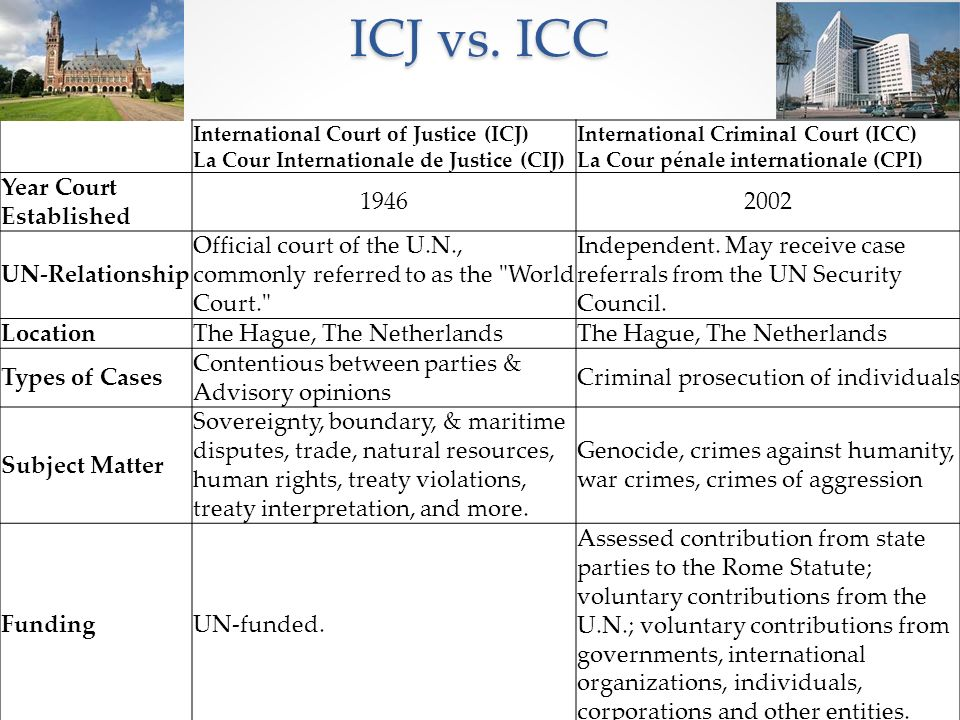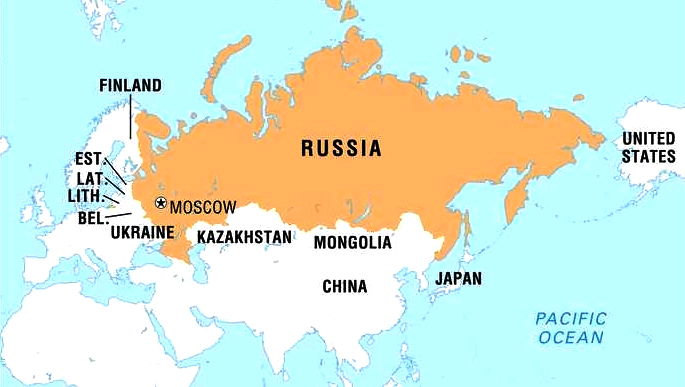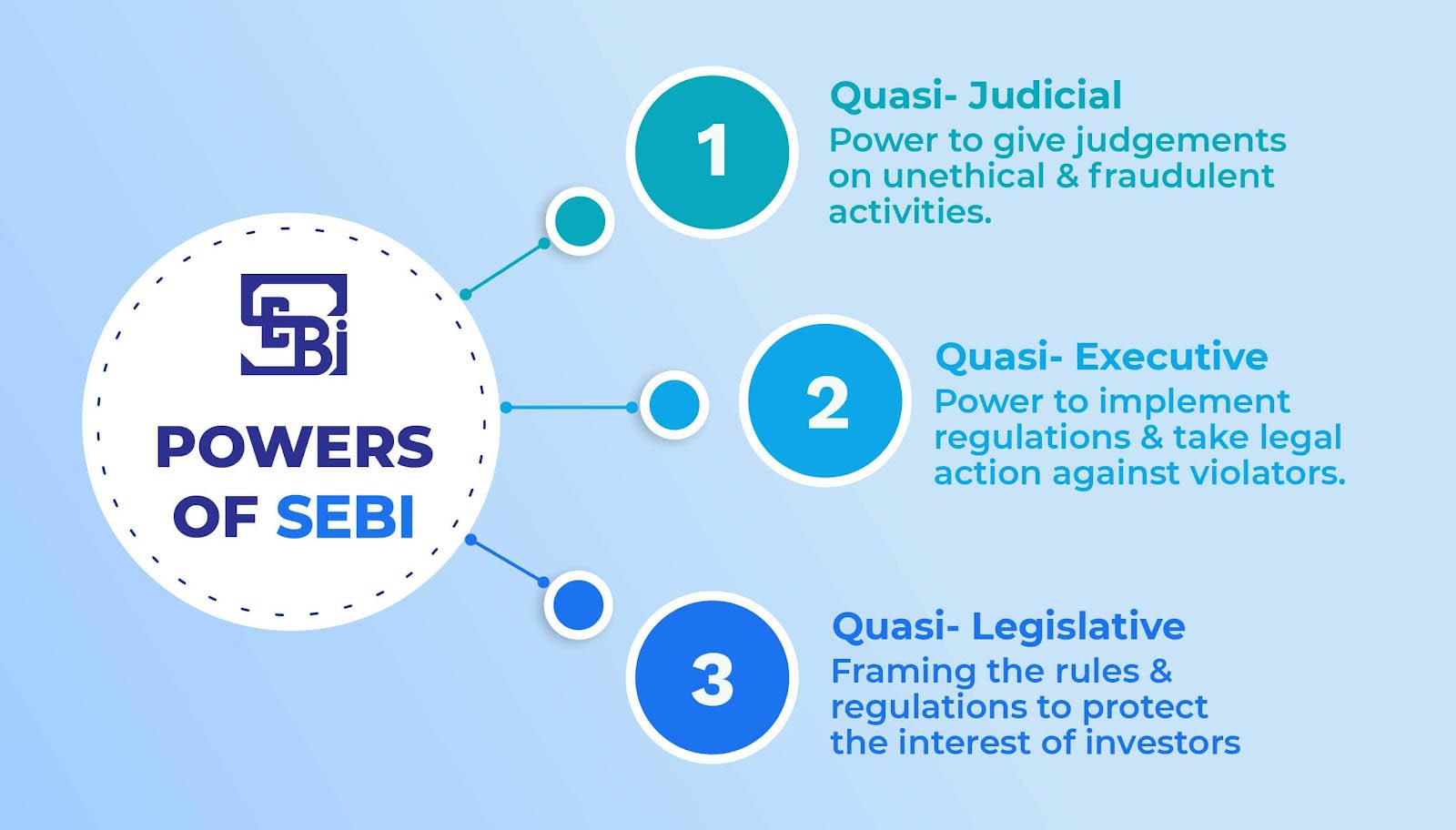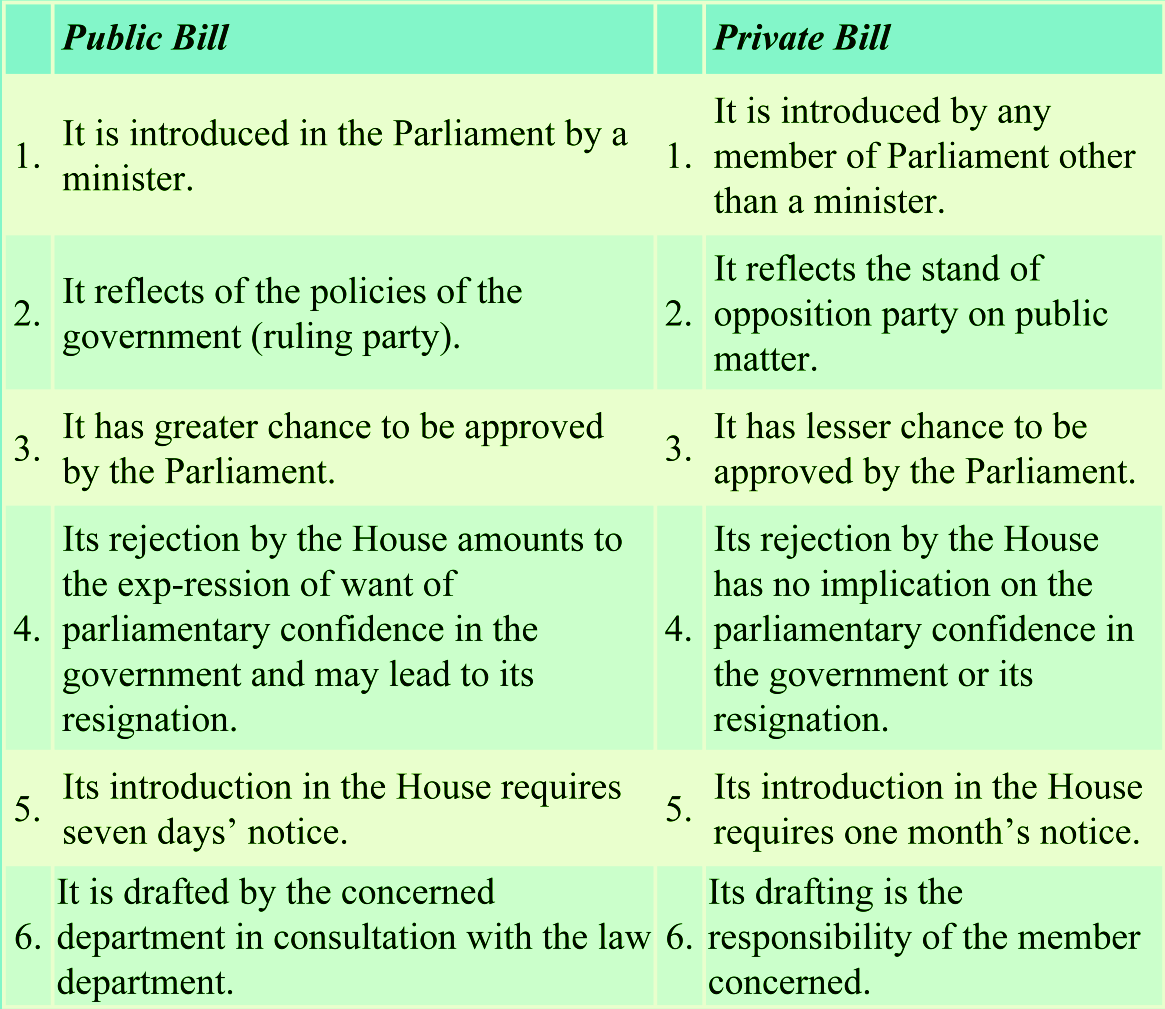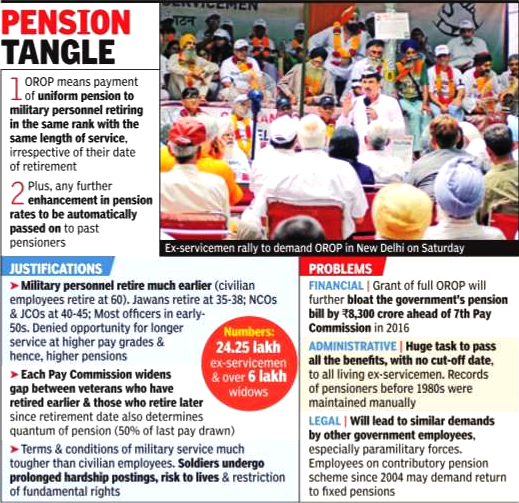International Court of Justice & Genocide Convention
For Prelims: International Court of Justice, Genocide Convention, India’s Engagement With ICJ, Permanent Court of International Justice, Second World War, 1998 Rome Statute of the International Criminal Court.
For Mains: Important International Institutions, Russia-Ukraine War, International Court of Justice
Why in News
Recently, Ukraine has filed an application before the International Court of Justice (ICJ), instituting proceedings against Russia.
- Ukraine has accused Russia of falsely claiming that "acts of genocide have occurred in the Luhansk and Donetsk oblasts of Ukraine", and of using that as a pretext to recognise the independence of these regions and of going to war against Ukraine.
- The dispute is concerning 1948 Convention on the Prevention and Punishment of the Crime of Genocide (the “Genocide Convention”).
What is the International Court of Justice?
- About: The ICJ is the principal judicial organ of the United Nations (UN).
- It is the only one of the six principal organs of the UN that is not located in New York City.
- Establishment: It was established in June 1945 by the Charter of the UN and began work in April 1946.
- Precursor: The court is the successor to the Permanent Court of International Justice (PCIJ), which was brought into being through, and by, the League of Nations.
- PCIJ held its inaugural sitting at the Peace Palace in The Hague, Netherlands, in February 1922.
- After World War II, the League of Nations and PCIJ were replaced by the UN and ICJ respectively.
- The PCIJ was formally dissolved in April 1946, and its last president, Judge José Gustavo Guerrero of El Salvador, became the first president of the ICJ.
- Role of ICJ: Its role is to settle, in accordance with international law, legal disputes submitted to it by States and to give advisory opinions on legal questions referred to it by authorized UN organs and specialized agencies.
- First Case: The first case, which was brought by the UK against Albania and concerned incidents in the Corfu channel — the narrow strait of the Ionian Sea between the Greek island of Corfu and Albania on the European mainland — was submitted in May 1947.
- ICJ Administration: The judges of the court are assisted by a Registry, the administrative organ of the ICJ.
- Official Languages: English and French.
- ICJ Jurisdiction: All members of the UN are automatically parties to the ICJ statute, but this does not automatically give the ICJ jurisdiction over disputes involving them.
- The ICJ gets jurisdiction only if both parties consent to it.
- The judgment of the ICJ is final and technically binding on the parties to a case.
- However, the ICJ has no way to ensure compliance of its orders, and its authority is derived from the willingness of countries to abide by them.
How Judges of the ICJ are Elected?
- The ICJ has 15 judges who are elected to nine-year terms by the UN General Assembly and Security Council, which vote simultaneously but separately.
- To be elected, a candidate must receive a majority of the votes in both bodies, a requirement that sometimes necessitates multiple rounds of voting.
- Elections are held at the UNHQ in New York during the annual UNGA meeting.
- A third of the court is elected every three years.
- The president and vice-president of the court are elected for three-year terms by secret ballot.
- Judges are eligible for re-election.
- Indian Judges at ICJ: Four Indians have been members of the ICJ so far.
- Justice Dalveer Bhandari, former judge of the Supreme Court, has been serving at the ICJ since 2012.
- Former Chief Justice of India R S Pathak served from 1989-91,
- Former Chief Election Commissioner of India Nagendra Singh from 1973-88.
- Sir Benegal Rau, who was an advisor to the Constituent Assembly, was a member of the ICJ from 1952-53.
What is the History of India’s Engagement With ICJ?
- India has been a party to a case at the ICJ on six occasions, four of which have involved Pakistan. They are:
- Right of Passage over Indian Territory (Portugal v. India, culminated 1960).
- Appeal Relating to the Jurisdiction of the ICAO Council (India v. Pakistan, culminated 1972).
- Trial of Pakistani Prisoners of War (Pakistan v. India, culminated 1973).
- Aerial Incident of 10 August 1999 (Pakistan v. India, culminated 2000).
- Obligations concerning Negotiations relating to Cessation of the Nuclear Arms Race and to Nuclear Disarmament (Marshall Islands v. India, culminated 2016).
- Kulbhushan Jadhav (India v. Pakistan, culminated 2019).
What is Genocide Convention?
- The Convention on the Prevention and Punishment of the Crime of Genocide (Genocide Convention) is an instrument of international law that codified for the first time the crime of genocide.
- The Genocide Convention was the first human rights treaty adopted by the General Assembly of the UN on 9 December 1948.
- It signified the international community’s commitment to ‘never again’ after the atrocities committed during the Second World War.
- Its adoption marked a crucial step towards the development of international human rights and international criminal law as we know it today.
- According to the Genocide Convention, genocide is a crime that can take place both in time of war as well as in time of peace.
- The definition of the crime of genocide, as set out in the Convention, has been widely adopted at both national and international levels, including in the 1998 Rome Statute of the International Criminal Court (ICC).
- Importantly, the Convention establishes on State Parties the obligation to take measures to prevent and to punish the crime of genocide, including by enacting relevant legislation and punishing perpetrators, “whether they are constitutionally responsible rulers, public officials or private individuals” (Article IV).
- That obligation, in addition to the prohibition not to commit genocide, have been considered as norms of international customary law and therefore, binding on all States, whether or not they have ratified the Genocide Convention.
- India is a signatory to this convention.
India-Russia Military Relations
For Prelims: Russia-Ukraine conflict, Operation Ganga, Various Defence Equipments India procure From Russia, Project 75I.
For Mains: Defence Technology, Bilateral Groupings & Agreements, India strategic ties with Russia, Russia-Ukraine conflict,
Why in News?
The evacuation of thousands of Indian students in Ukraine (Operation Ganga) is the most immediate impact of Russia’s war over Ukraine on India. However, the Russia-Ukraine conflict will have long-term implications too.
- For example, negotiating its relationships with the United States and other Western nations on one side, and the historically deep and strategic ties with Russia on the other.
- This will most significantly have an impact on the decades-old defence trade between India and Russia.
What is the History of India-Russia Defence Ties?
- India was reliant, almost solely on the British, and other Western nations for its arms imports immediately after Independence.
- However, this dependence weaned, and by the 1970s India was importing several weapons systems from the USSR (now Russia), making it the country’s largest defence importer for decades.
- Russia has provided some of the most sensitive and important weapons platforms that India has required from time to time including nuclear submarines, aircraft carriers, tanks, guns, fighter jets, and missiles.
- According to one estimate, the share of Russian-origin weapons and platforms across Indian armed forces is as high as 85%.
- Russia is the second-largest arms exporter in the world, following only the United States.
- For Russia, India is the largest importer, and for India, Russia is the largest exporter when it comes to arms transfer.
- Between 2000 and 2020, Russia accounted for 66.5% of India’s arms imports.
- Russia’s share in Indian arms imports was down to about 50% between 2016 and 2020, but it still remained the largest single importer.
What Defence Equipment does India procure From Russia?
- Submarines: The first submarine India ever got was also Soviet.
- The first Foxtrot Class submarine bought from the USSR entered Indian service in 1967 as INS Kalvari.
- Of the total 16 conventional diesel-electric submarines with the Indian Navy, eight are Kilo class, of Soviet origins.
- India has one indigenously manufactured nuclear ballistic submarine (INS Arihant) commissioned, of the four that are being built. However, a lot of the technology is based on Russian platforms.
- Frigates & Guided-missile Destroyers: Four of the Navy’s 10 guided-missile destroyers are Russian Kashin class, and 6 of its 17 frigates are Russian Talwar class.
- Aircraft Carrier: The only aircraft carrier in service with India, INS Vikramaditya is a Soviet-made Kiev-class vessel that came into service for the Indian Navy in 2013.
- Missile Program: India’s missile programme has been developed with significant help from Russia or the Soviets earlier.
- The BrahMos missile, which India will begin exporting soon, has been developed jointly with Russia.
- Fighter Aircraft: Russia has also been one of main exporters of fighter aircraft to India, including hundreds of Sukhoi and MiG jets. All six of the service’s air tankers are Russian-made Il-78s.
- Arms and Ammunitions: According to the International Institute of Strategic Studies (IISS), India’s present military arsenal is heavily stocked with Russian-made or Russian-designed equipment.
- Tanks: Indian Army’s main battle tank force is composed predominantly of Russian T-72M1 (66%) and T-90S (30%).
- Favourable Russian Military Exports to India: Much of Russia’s influence in India comes through its willingness to provide weapons systems and technologies that no other country will export to India.
- The US only provides non-lethal defence technology like C-130j Super Hercules, C-13 Globemaster, P-8i Poseidon etc.
- While Russia provides high-end technology like Brahmos supersonic missile, S-400 anti-missile system.
- Russia also continues to offer advanced weapons platforms at relatively attractive rates.
What can be the Impact of the Russia-Ukraine War on Military Supplies?
- At the moment there are two major defence deals between India and Russia that might be jeopardised by the current crisis.
- S-400 Triumf air-defence system Deal:
- The deal has been under the threat of American sanctions, even as the US had not decided on it yet.
- However, the fresh round of sanctions on Russia could jeopardise this deal.
- Joint Submarine Development: Russia has also pitched to make six Air Independent Propulsion (AIP-powered) conventional submarines for the Navy under the P75-I project, along with four other international bidders.
- India is also in talks with Russia to lease two nuclear-ballistic submarines, Chakra 3 and Chakra 4, the first of which is expected to be delivered by 2025.
What are India’s Plans to Diversify Arms Import Diversification?
- Over the last few years, there has been a conscious effort to expand the weapons platform bases to not only other countries but also domestically as well.
- Stockholm International Peace Research Institute (SIPRI) noted in its international arms transfer trends report last year that between 2011–15 and 2016–20 arms imports by India decreased by 33%.
- In 2011–15 the USA was the second-largest arms supplier to India, but in 2016–20 India’s arms imports from the USA were 46% lower than in the previous five-year period, making the USA the fourth-largest supplier to India in 2016–20.
- France and Israel were the second and third largest arms suppliers to India in 2016–20.
Way Forward
- As India perceives increasing threats from Pakistan and China and as its ambitious plans to produce its own major arms have been significantly delayed, it is planning large-scale programmes for arms imports.
- India’s outstanding deliveries of combat aircraft, air defence systems, ships and submarines, India’s arms imports are expected to increase over the coming five years.
- Therefore, it is important for India to diversify its base, to not become too reliant on any single nation, as it can become a leverage that can be exploited by that nation.
Securities and Exchange Board of India
For Prelims: Securities and Exchange Board of India, Capital Market.
For Mains: Statutory Bodies, Quasi Judicial Bodies, Capital Market, Issues with SEBI and Way Forward.
Why in News?
Recently, Madhabi Puri Buch, former whole-time member of the Securities and Exchange Board of India (SEBI), has been appointed as its new chairperson — the first woman to head the market regulator. She will hold the position for three years.
- Earlier in January 2022, SEBI launched Saa₹thi – a mobile app on investor education.
What is SEBI?
- About:
- SEBI is a Statutory Body (a Non-Constitutional body which is set up by a Parliament) established on 12th April, 1992 in accordance with the provisions of the Securities and Exchange Board of India Act, 1992.
- The basic functions of SEBI is to protect the interests of investors in securities and to promote and regulate the securities market.
- The headquarters of SEBI is situated in Mumbai. The regional offices of SEBI are located in Ahmedabad, Kolkata, Chennai and Delhi.
- Background:
- Before SEBI came into existence, Controller of Capital Issues was the regulatory authority, it derived authority from the Capital Issues (Control) Act, 1947.
- In April, 1988 the SEBI was constituted as the regulator of capital markets in India under a resolution of the Government of India.
- Initially SEBI was a non statutory body without any statutory power.
- It became autonomous and given statutory powers by SEBI Act 1992.
What is SEBIs Structure?
- SEBI Board consists of a Chairman and several other whole time and part time members.
- SEBI also appoints various committees, whenever required to look into the pressing issues of that time.
- Further, a Securities Appellate Tribunal (SAT) has been constituted to protect the interest of entities that feel aggrieved by SEBI’s decision.
- SAT consists of a Presiding Officer and two other Members.
- It has the same powers as vested in a civil court. Further, if any person feels aggrieved by SAT’s decision or order can appeal to the Supreme Court.
What is SEBIs Power And Functions?
- SEBI is a quasi-legislative and quasi-judicial body which can draft regulations, conduct inquiries, pass rulings and impose penalties.
- It functions to fulfill the requirements of three categories:
- Issuers: By providing a marketplace in which the issuers can increase their finance.
- Investors: By ensuring safety and supply of precise and accurate information.
- Intermediaries: By enabling a competitive professional market for intermediaries.
- By Securities Laws (Amendment) Act, 2014, SEBI is now able to regulate any money pooling scheme worth Rs. 100 cr. or more and attach assets in cases of non-compliance.
- SEBI Chairman has the authority to order "search and seizure operations". SEBI board can also seek information, such as telephone call data records, from any persons or entities in respect to any securities transaction being investigated by it.
- SEBI performs the function of registration and regulation of the working of venture capital funds and collective investment schemes including mutual funds.
- It also works for promoting and regulating self-regulatory organizations and prohibiting fraudulent and unfair trade practices relating to securities markets.
What are the Issues and Related Concerns?
- In recent years SEBI's role became more complex, the capital markets regulator is at a crossroads.
- There is excessive focus on regulation of market conduct and lesser emphasis on prudential regulation.
- SEBI’s statutory enforcement powers are greater than its counterparts in the US and the UK as it is armed with far greater power to inflict serious economic injury.
- It can impose serious restraints on economic activity, this is done based on suspicion, leaving it to those affected to shoulder the burden of disproving the suspicion, somewhat like preventive detention.
- Its legislative powers are near absolute as the SEBI Act grants wide discretion to make subordinate legislation.
- The component of prior consultation with the market and a system of review of regulations to see if they have met the articulated purpose is substantially missing. As a result, the fear of the regulator is widespread.
- Regulation, either rules or enforcement, is far from perfect, particularly in areas like insider trading.
- The Securities offering documents are extraordinarily bulky and have substantially been reduced to formal compliance rather than resulting in substantive disclosures of high quality.
Way Forward
- There is need of an attitudinal change, indeed, hundreds of inputs about the market being full of crooks necessitating a crackdown and severe intervention would be received.
- The foremost objective of SEBI should be cleaning up the policy space in this area of the market.
- SEBI must give special attention to human resources and matters within the organization. SEBI must encourage lateral entry to draw the best talent.
- Alignment and fitment of senior employees upon merger of the Forward Markets Commission into Sebi remains an open area of work.
- Enforcement can be strengthened with continuous monitoring and improving market intelligence.
- India’s financial markets are still segmented. One regulator can’t be blamed for another’s failure when the remit over a financial product overlaps.
- In this context a unified financial regulator makes eminent sense to remove both overlap and excluded boundaries.
Minimum Assured Return Scheme: PFRDA
For Prelims: Minimum Assured Return Scheme, Pension Fund Regulatory and Development Authority, National Pension System.
For Mains: Government Policies & Interventions, Welfare Schemes, Significance of Minimum Assured Return Scheme for Salaried Persons.
Why in News?
The Pension Fund Regulatory and Development Authority (PFRDA) has proposed a guaranteed return scheme, Minimum Assured Return Scheme (MARS), which will provide savers and people from the salaried class an option for their investments.
- This will be the first scheme from the pension regulator that will offer a guaranteed return to investors.
- India’s pension assets under management have already crossed the Rs 7-lakh crore mark and are expected to touch RS 7.5-lakh crore by end March this fiscal 2021-22.
- PFRDA is aiming for an AUM (Assets Under Management) of Rs 30-lakh crore by 2030.
What is PFRDA’s Proposal under MARS?
- About:
- To have a separate scheme that can offer a guaranteed minimum rate of return to NPS (National Pension System) subscribers, especially those who are risk averse.
- Currently, the NPS gives returns annually, based on prevailing market conditions.
- The actual returns will depend on the market conditions. Any shortfall will be made good by the sponsor, and the surplus will be credited to the subscribers’ account.
- To have a separate scheme that can offer a guaranteed minimum rate of return to NPS (National Pension System) subscribers, especially those who are risk averse.
- Options that will be offered:
- Fixed Guarantee Option: Under the fixed guarantee option, the guaranteed return is fixed along the accumulation phase.
- Floating Guarantee Option: Under the floating guarantee option, the guaranteed rate of return is not fixed along the savings phase.
- The floating guarantee depends on the development of the 1-year interest rate until retirement.
- Lock-in- Period:
- The Lock-in may be applicable on each contribution, and will be applied based on the period since that contribution has been made. It may also consider multiple lock-in period options (or staggered guarantee periods) for flexibility.
- Withdrawals are likely to be directly linked to the lock-in period. The subscriber may have the option to withdraw or to stay invested after the lock-in period. However, there won’t be any guarantee applied on the investment after lock-in.
- Limit of Contribution:
- Minimum and maximum monetary limits on contributions may be prescribed. The attraction for investors will be the minimum guaranteed return.
What is the National Pension System?
- About:
- The Central Government introduced the NPS with effect from January 2004 (except for armed forces).
- In 2018 to streamline the NPS and make it more attractive, the Union Cabinet approved changes in the scheme to benefit central government employees covered under NPS.
- NPS is implemented and regulated by PFRDA.
- National Pension System Trust (NPST) established by PFRDA is the registered owner of all assets under NPS.
- The Central Government introduced the NPS with effect from January 2004 (except for armed forces).
- Structure: NPS is structured into two tiers:
- Tier-I account:
- This is the non-withdrawable permanent retirement account into which the accumulations are deposited and invested as per the option of the subscriber.
- Tier-II account:
- This is a voluntary withdrawable account which is allowed only when there is an active Tier I account in the name of the subscriber.
- The withdrawals are permitted from this account as per the needs of the subscriber as and when claimed.
- Tier-I account:
- Beneficiaries:
- NPS was made available to all Citizens of India from May 2009.
- Any individual citizen of India (both resident and Non-resident) in the age group of 18-65 years can join NPS.
- However, OCI (Overseas Citizens of India) and PIO (Person of Indian Origin) card holders and Hindu Undivided Family (HUFs) are not eligible for opening of NPS accounts.
What is the Pension Fund Regulatory and Development Authority?
- About:
- It is the statutory Authority established by an enactment of the Parliament, to regulate, promote and ensure orderly growth of the National Pension System (NPS).
- It works under the Department of Financial Services under the Ministry of Finance.
- Functions:
- It performs the function of appointing various intermediate agencies like Pension Fund Managers, Central Record Keeping Agency (CRA) etc.
- It develops, promotes and regulates the pension industry under the NPS and also administers the APY.
Demand for Rajya Sabha Seat to Chandigarh
For Prelims: Rajya Sabha, Article 80, Fourth Schedule of the Constitution, Schedules of the Indian Constitution, Private Member Bill
For Mains: Private Member Bill, Representation of UTs in Indian Parliament
Why in News?
Recently, the Chandigarh Municipal Corporation has approved a proposal to amend Article 80 of the Constitution so that its councillors could send a representative to the Rajya Sabha.
- Article 80 of the Constitution of India deals with the composition of the council of states also called the Upper House and Rajya Sabha (Upper House).
- So far, Chandigarh has no representation in the Rajya Sabha.
What is the Demand of the Proposed Bill?
- The bill (Private Member Bill) sought the adding of a provision provided that the representative of the Union Territory of Chandigarh in the council of states shall be elected by an electoral college.
- The electoral college should consist of elected members of the Municipal Corporation of Chandigarh constituted under the Punjab Municipal Corporation (Extension to Chandigarh) Act, 1994 in Article 80 of the Constitution.
- An amendment has also been sought to the Fourth Schedule of the Constitution with ‘Entry 32, Chandigarh.
- The fourth Schedule contains provisions as to the allocation of seats in the Council of States.
- It contains the number of seats represented in the Council of states (Rajya Sabha) from each State and Union Territory.
Where does Chandigarh Stand?
- Chandigarh is a Union Territory without any legislative assembly and has a seat of Member of Parliament (MP) in the Lower House (Lok Sabha) or House of the People.
- Chandigarh residents elect an MP every five years through direct voting.
- The union territories of Puducherry, Jammu and Kashmir and the National Capital Territory of Delhi have representation in the Rajya Sabha, while Ladakh, Chandigarh, Dadra and Nagar Haveli — Daman and Diu, Andaman and Nicobar Islands and Lakshadweep are unrepresented in the upper house.
What are the Legal Objections?
- The elected Municipal Corporation Councillors do not form the electoral college for selecting a member for Upper house (Rajya Sabha) because it is beyond the powers of the Municipal Corporation.
- Between 1966 and 1990, MPs for Rajya Sabha in Delhi were selected by the members of the Metropolitan Council of Delhi.
- There is a difference between the Metropolitan Council and Municipal Corporation.
- There is also a distinction between the electoral college of legislatures and electoral college of MC councillors.
- Also Chandigarh has no legislative Assembly like Delhi, which also is a Union Territory, and the city also lacks a metropolitan council, which exists in the national capital.
- Also, selecting Rajya Sabha MP, is beyond the listed scope of functions of the municipal corporation.
- If the functions of the civic body are to be extended beyond the listed scope of functions it would not be feasible and would go against the constitutional mandate of any such Municipal Corporation.
- As the civic body gave its assent to the amendment, UT Administration will send it to the Ministry of Home Affairs for further consideration and then it will be forwarded to the Parliament.
What is a Private Member Bill?
- Any MP who is not a minister is referred to as a private member.
- Its drafting is the responsibility of the member concerned. Its introduction in the House requires one month’s notice.
- The government bills\public bills can be introduced and discussed on any day, private member’s bills can be introduced and discussed only on Fridays.
- In case of multiple Bills, a ballot system is used to decide the sequence of bills for introduction.
- The Parliamentary Committee on Private Member's Bills and Resolutions goes through all such Bills and classifies them based on their urgency and importance.
- Its rejection by the House has no implication on the parliamentary confidence in the government or its resignation.
- Upon conclusion of the discussion, the member piloting the bill can either withdraw it on the request of the minister concerned, or he may choose to press ahead with its passage.
Public Bill vs Private Bill
RFID of Ammunition Stock
Why in News
Recently, the Indian Army commenced implementation of Radio Frequency Identification (RFID) tagging of its ammunition inventory.
- Earlier in 2021, the Union Government integrated the E-Way Bill (EWB) system with FasTag and RFID.
What is Radio Frequency Identification?
- RFID is a type of passive wireless technology that allows for tracking or matching of an item or individual.
- The system has two basic parts: Tags and Readers.
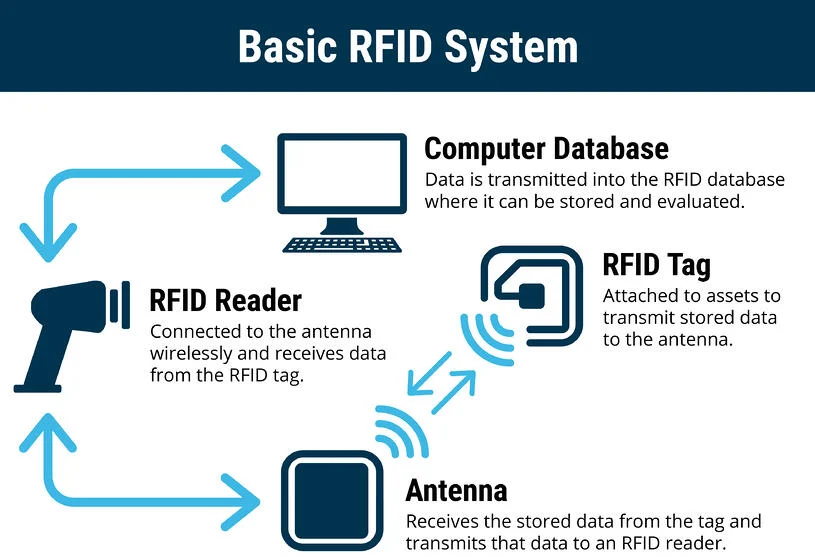
- The reader gives off radio waves and gets signals back from the RFID tag, while the tag uses radio waves to communicate its identity and other information.
- A tag can be read from up to several feet away and does not need to be within the direct line-of-sight of the reader to be tracked.
- The technology has been approved since before the 1970s but has become much more prevalent in recent years due to its usages in things like global supply chain management and pet microchipping.
What is RFID of Ammunition Stock?
- The RFID implementation has been steered by the Ordnance Services Directorate of the Indian Army, in conjunction with Munitions India Limited (MIL), Pune, the newly created entity formed post corporatisation of the Ordnance Factories Board (OFB).
- The RFID tagging is in conformity with global standards in consultation with GS-1 India, a Global Standards organisation set up by the Ministry of Commerce and Industry.
- The RFID tags will be interpreted and used for asset tracking by the Enterprise Resource Application run by the Computerised Inventory Control Group (CICG) of the Ordnance Services Directorate
What is the Significance?
- It will transform management of ammunition and bring in a quantum jump in ammunition lot management and tracking capability.
- It will make ammunition storage and use by soldiers safer and provide enhanced satisfaction to the field Army.
- It shall lead to increased efficiency in all technical activities carried out in Ammunition Depots and reduce inventory carrying costs.
One Rank One Pension
Why in the News?
Recently, the Supreme Court asked the Centre to show how many persons in the Armed forces have benefitted from ‘One Rank One Pension’ (OROP) policy.
- The court also said that Centre’s stand on OROP presented a much "rosier picture" than what is actually given to the pensioners of the Armed forces.
What is OROP?
- OROP means the payment of the same pension to military officers for the same rank for the same length of service, irrespective of the date of retirement.
- Before OROP, ex-servicemen used to get pensions as per the Pay Commission's recommendations of the time when they had retired.
- Uttar Pradesh and Punjab have the highest number of OROP beneficiaries.
- Armed Forces Personnel who had retired till 30th june 2014 are covered under it.
- The implementation of the scheme was based on recommendation of the Koshiyari committee, a 10 member all-party parliamentary panel formed under the chairmanship of Bhagat Singh Koshiyari.

